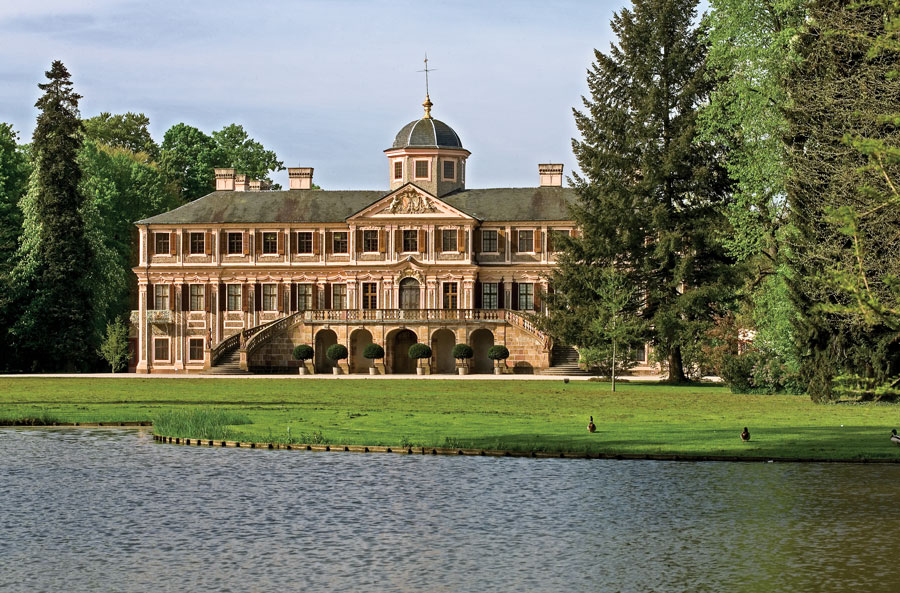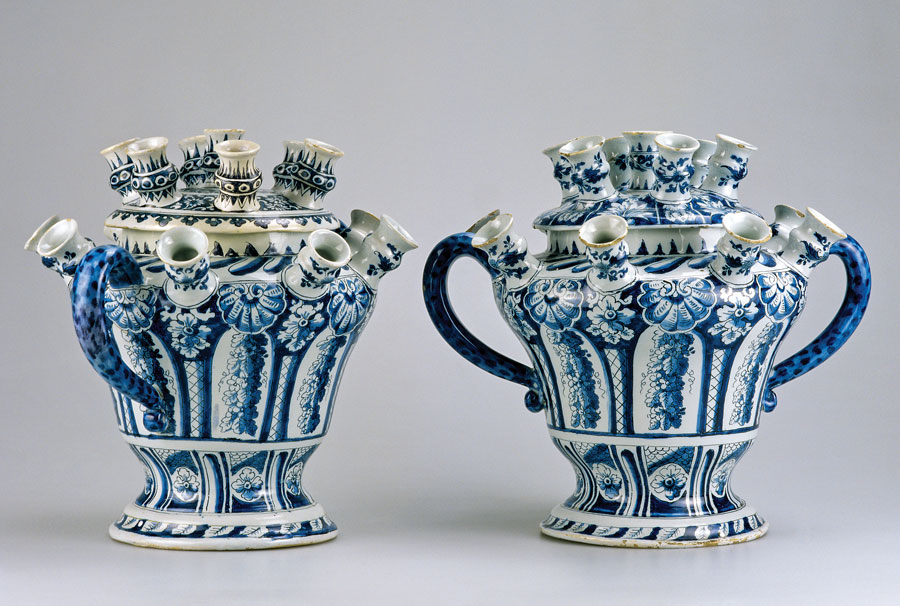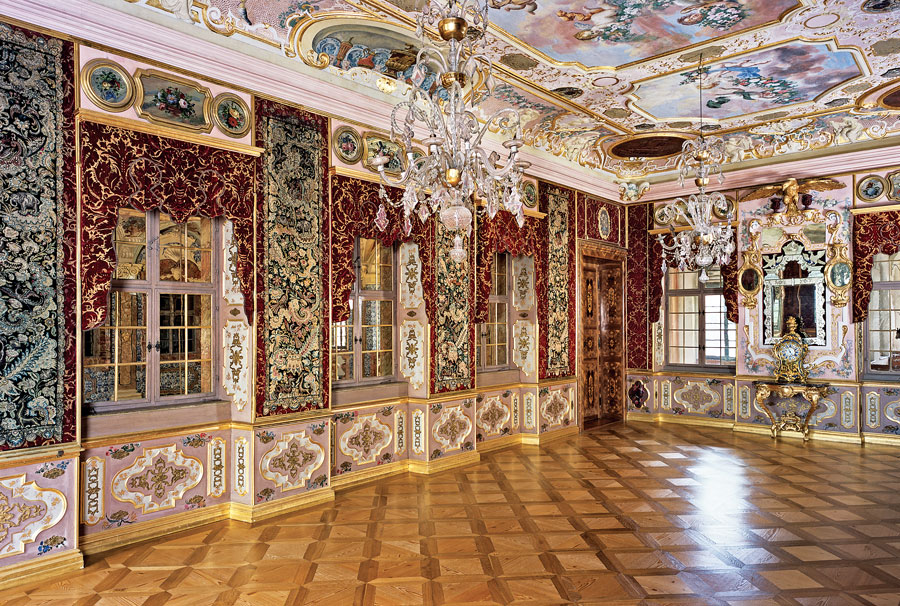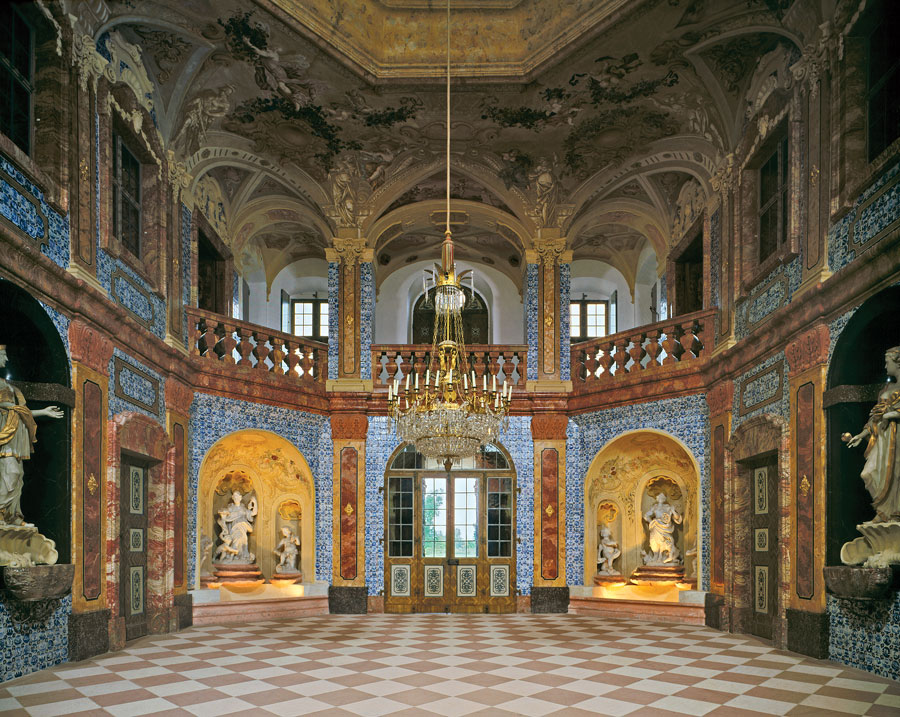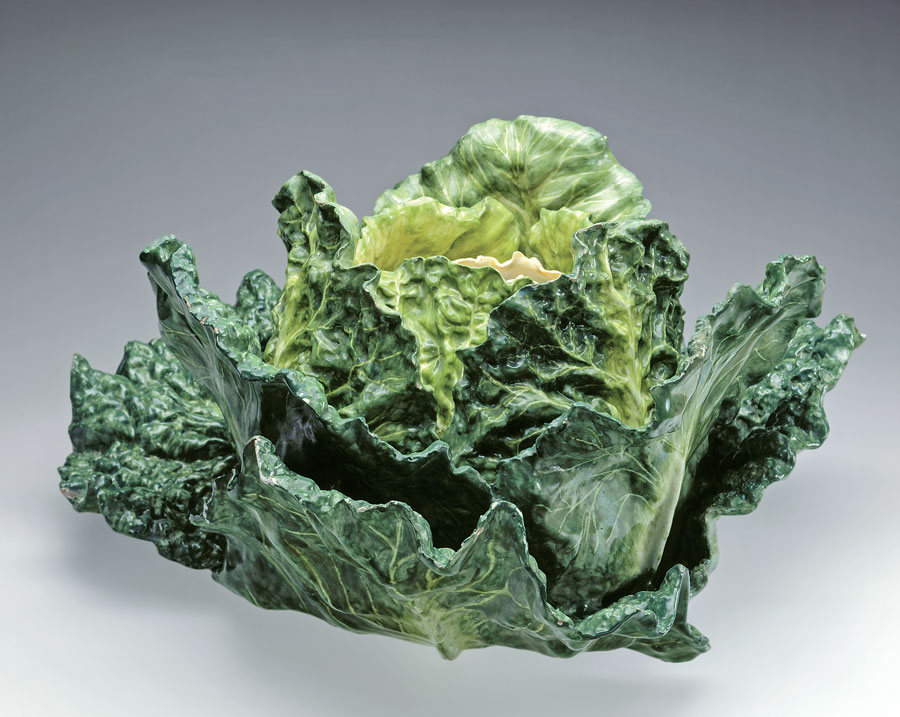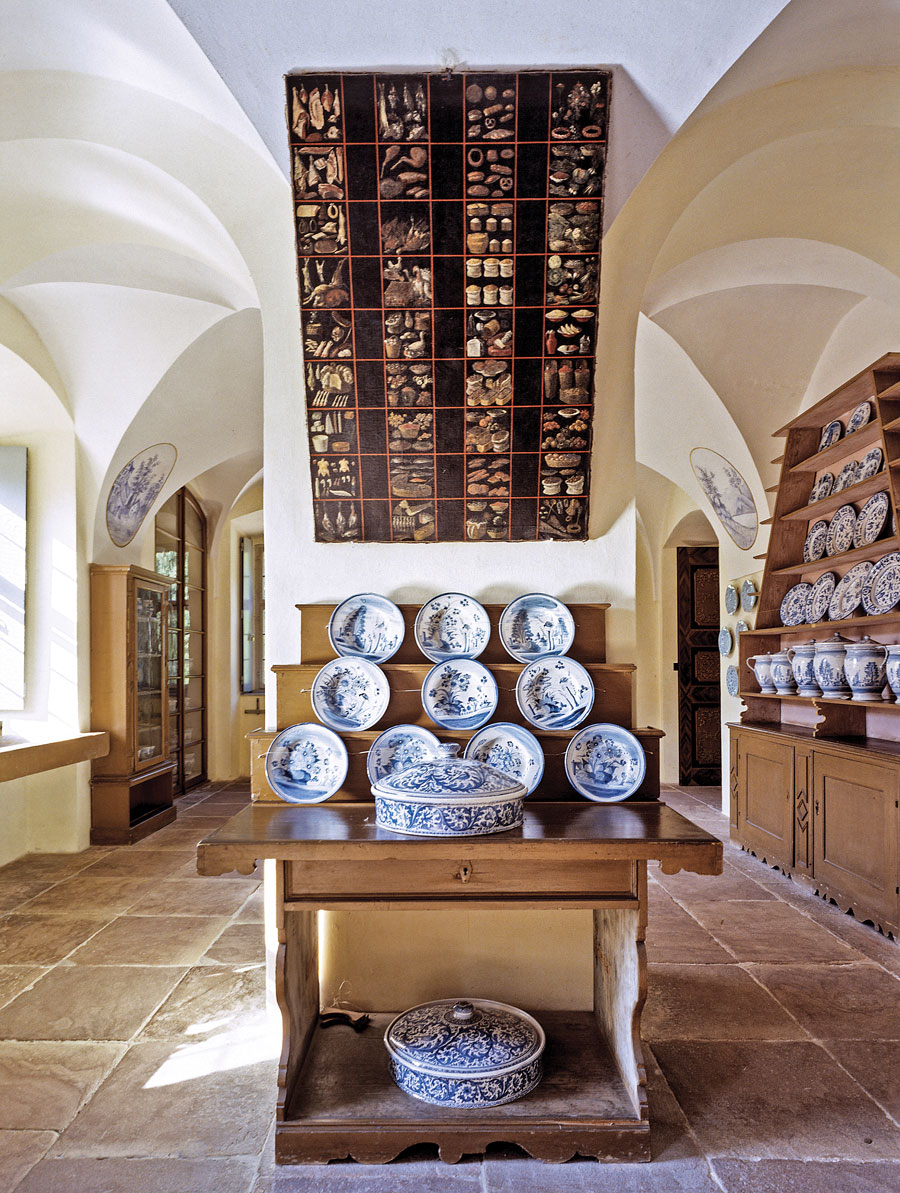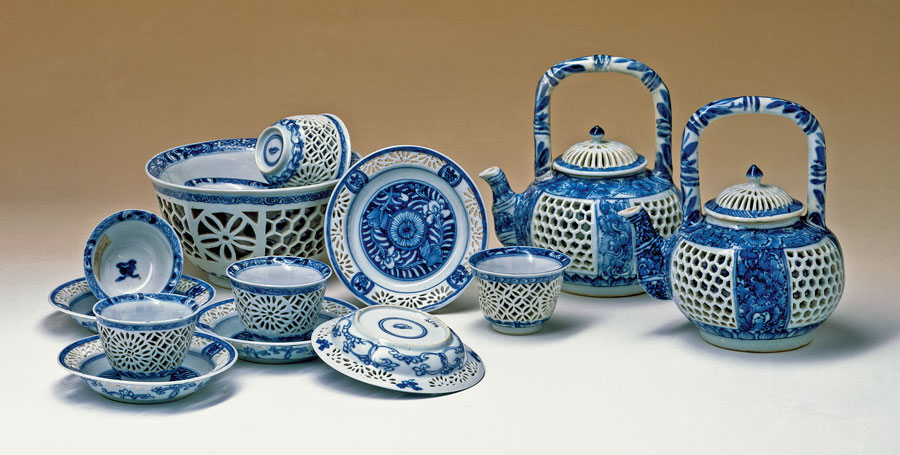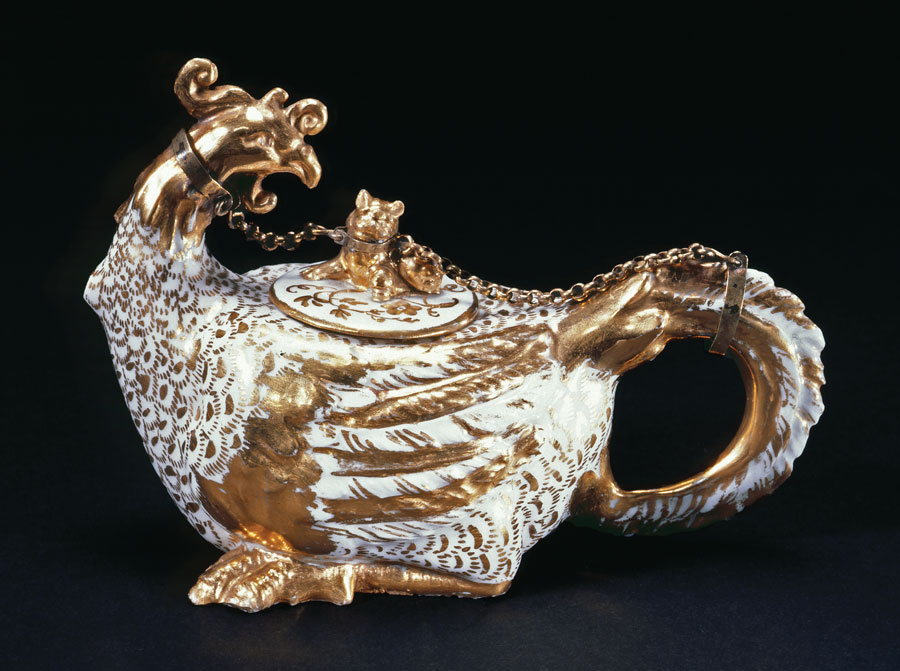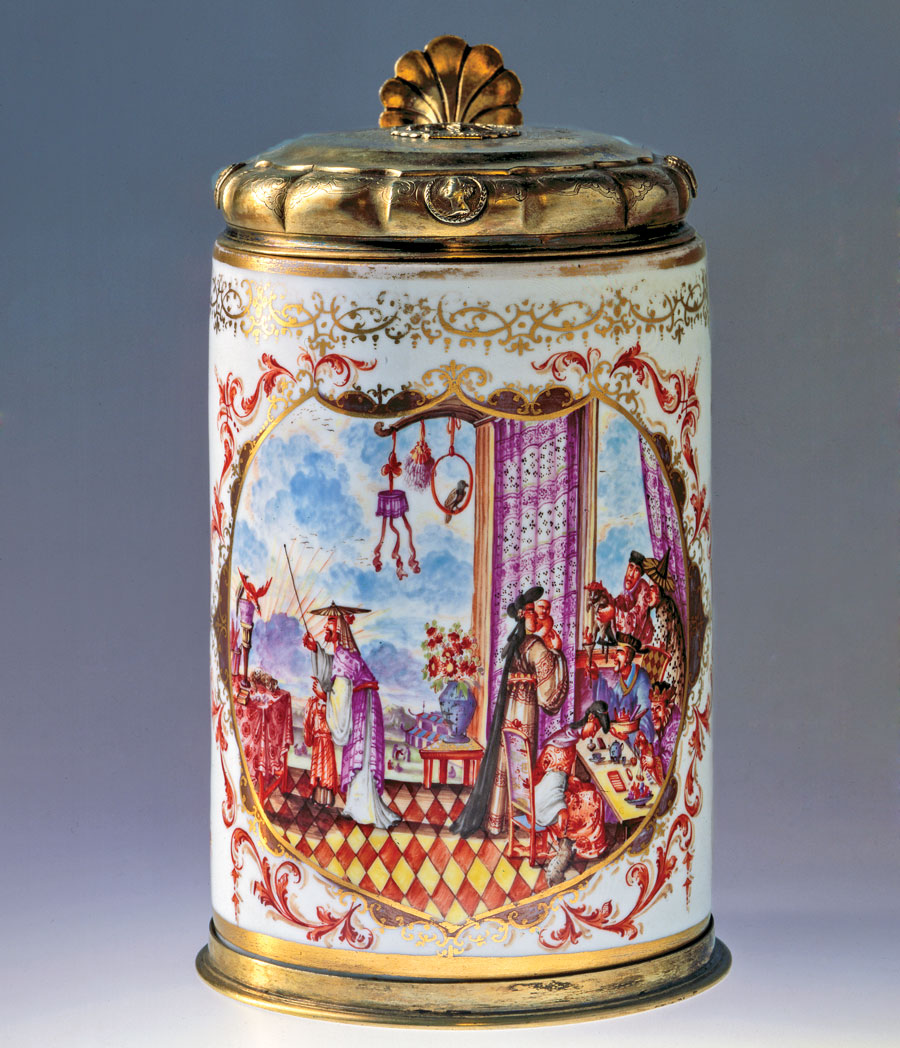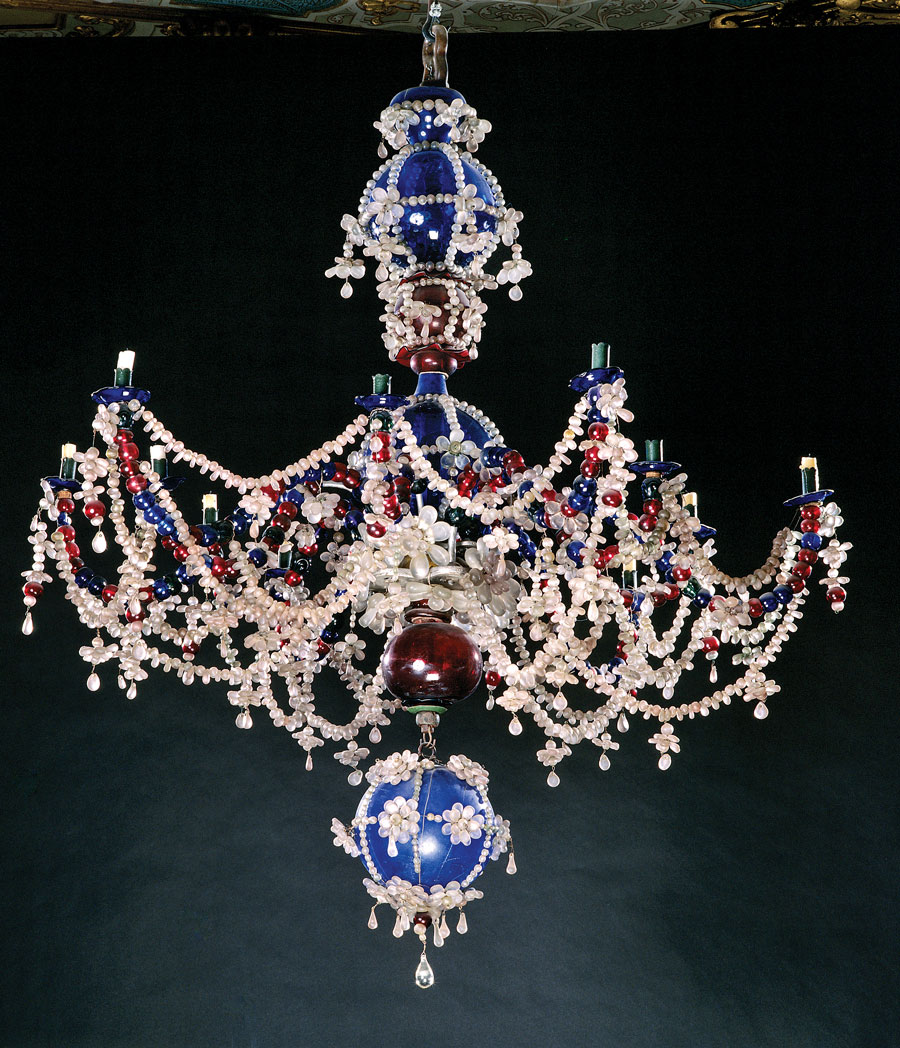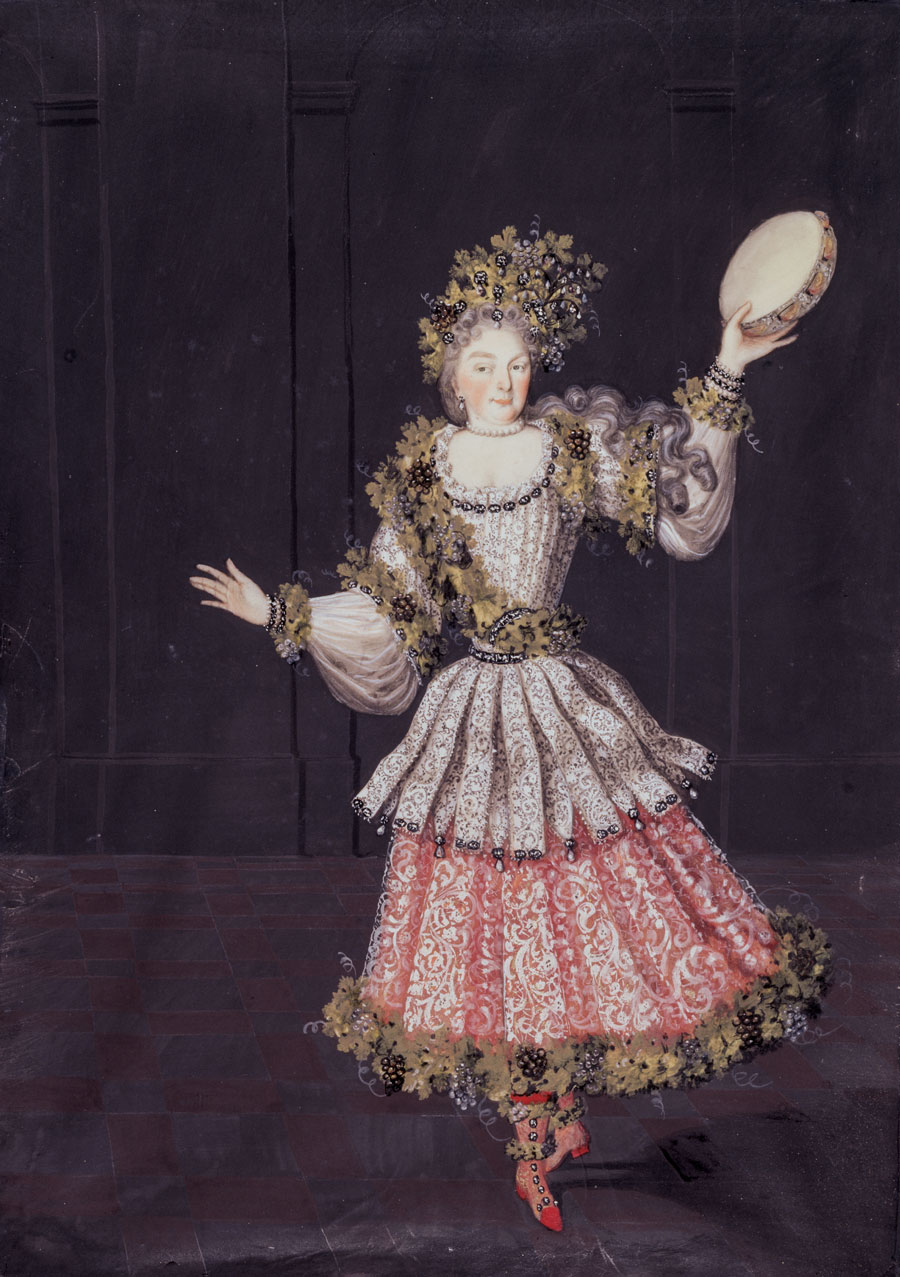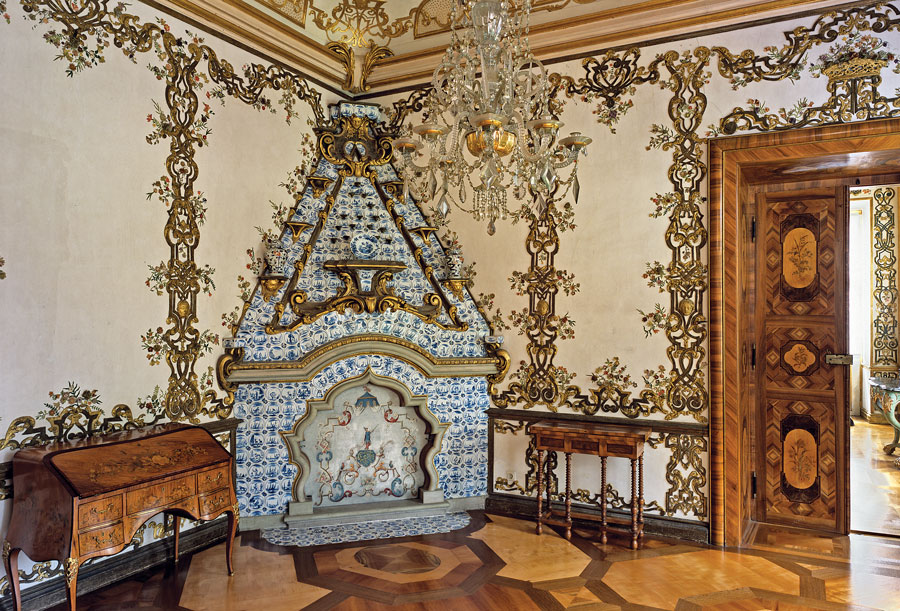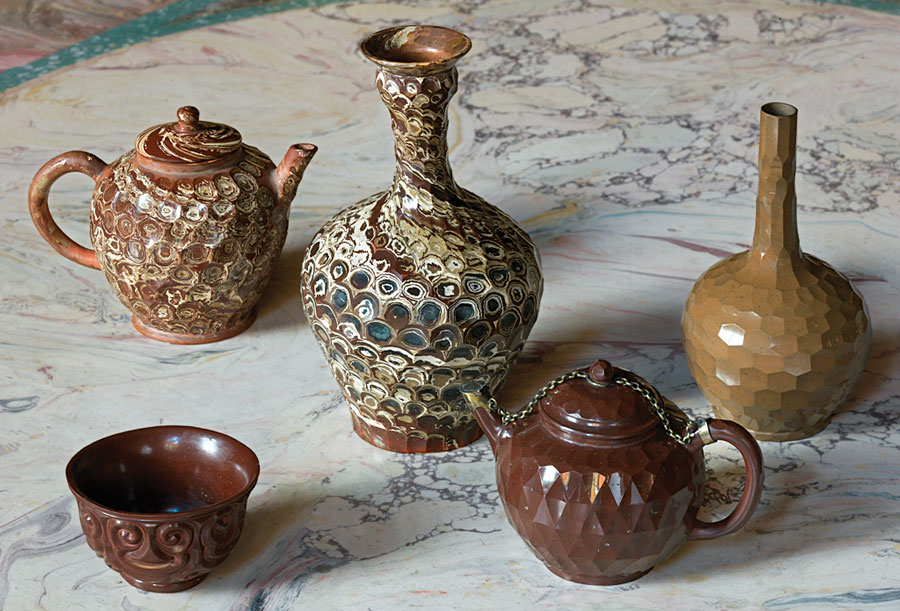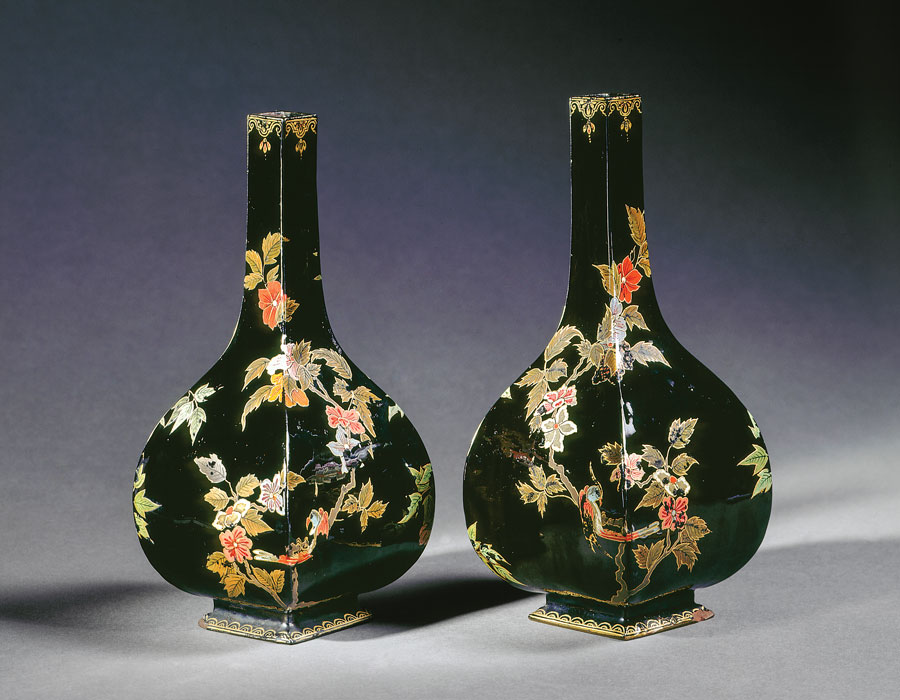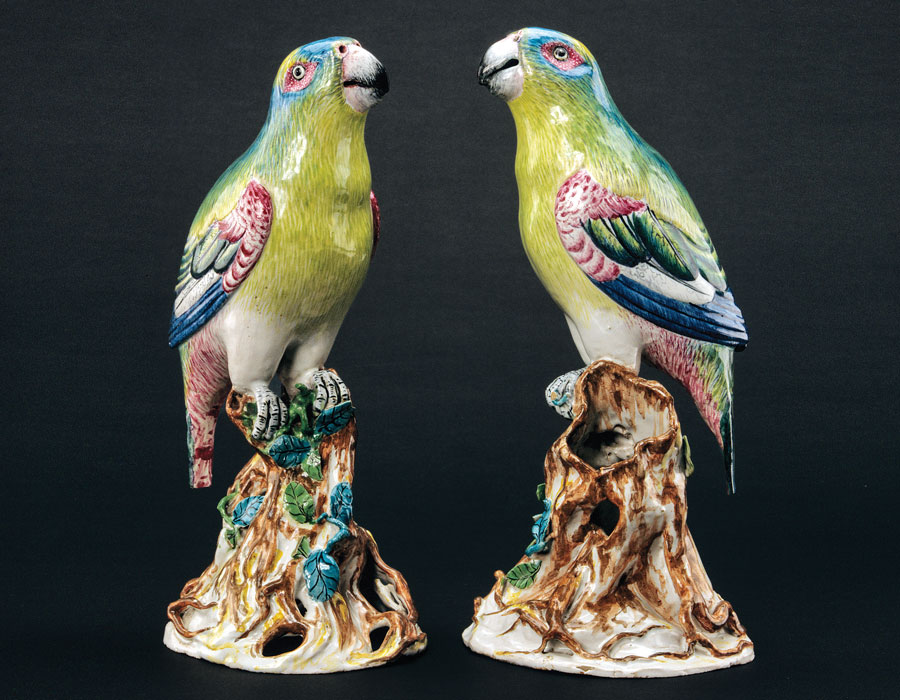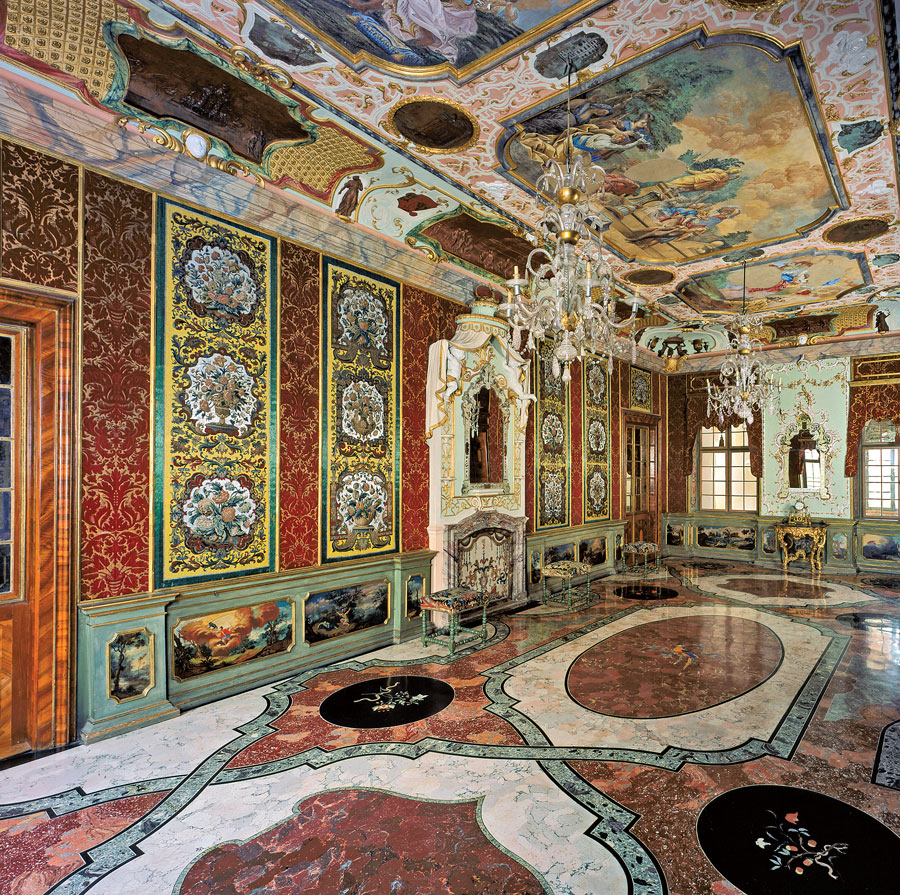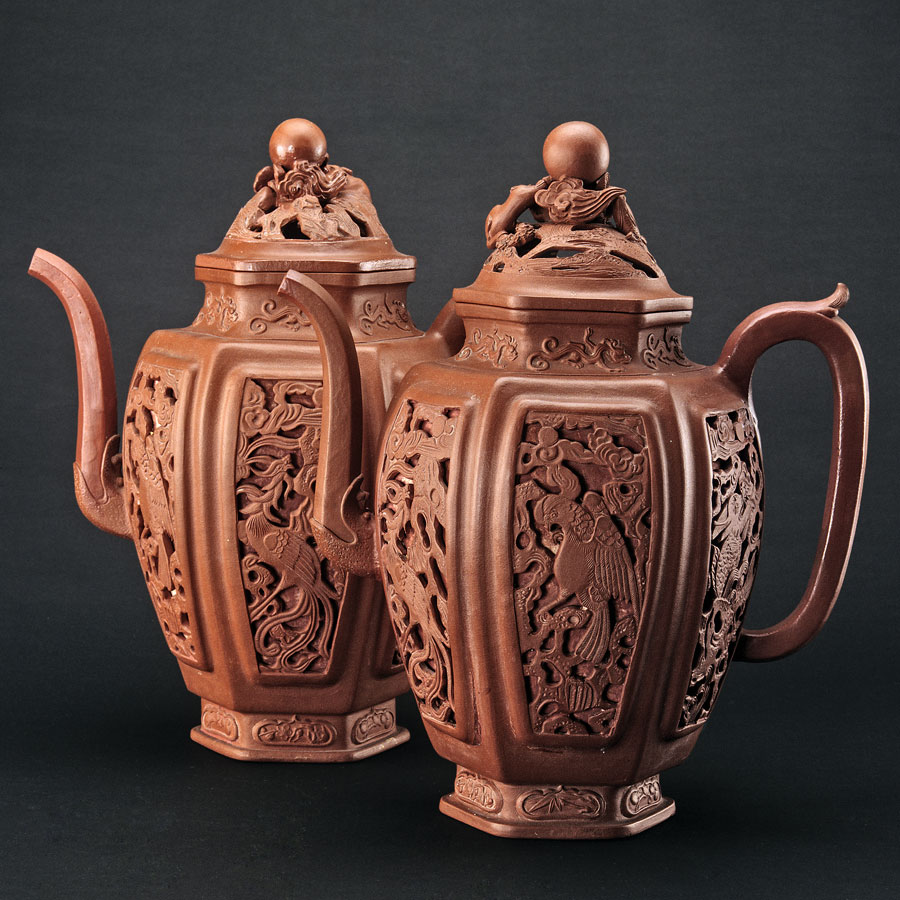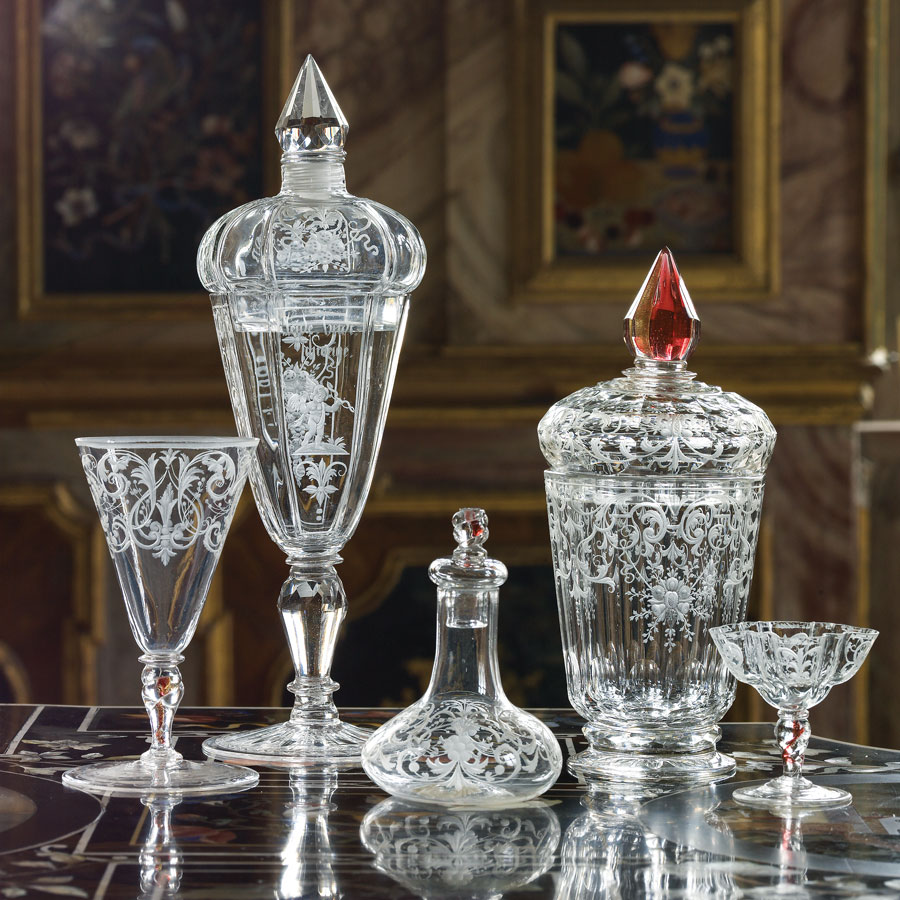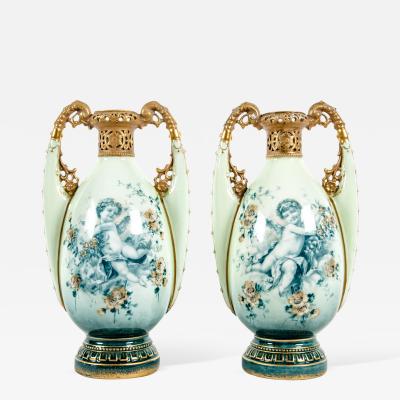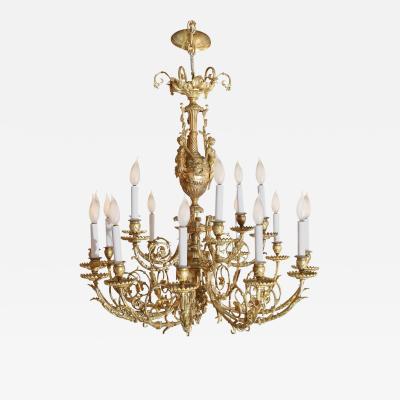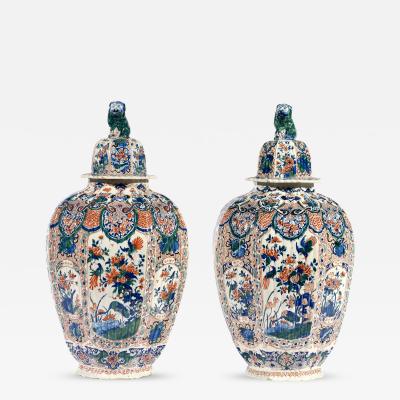The Porcelain Palace: At Home with the Margravine Sibylla Augusta von Baden-Baden
Schloss Favorite in Rastatt, Germany, in the state of Baden-Würtenburg bordering France and Switzerland, is the last surviving and oldest of the so-called “porcelain palaces” (Fig. 1), named for the extensive displays of ceramics (Fig. 2) throughout the public rooms.1 The palace is only five miles from the aristocratic spa town of Baden-Baden, where the Roman’s discovered healing springs more than 2000 years ago, and sections remain of two castles and a hunting lodge that belonged to the Margraves of Baden-Baden.
The Baroque Schloss Favorite is seasonally open to the public, but was originally built for Margravine Sibylla Augusta von Baden-Baden. Born in 1675 as Princess of Saxe-Lauenburg in Bohemia, she married the Margrave Ludwig Wilhelm von Baden-Baden, twenty years her senior and popularly known as “Turkish Louis” for his victories over the Turks in 1683–1699. He died in 1707 at the age of fifty-two from a war injury, leaving Sibylla with three children.
Taking seriously the Margrave’s instruction to her to “Take the land and the people—like a mother—into your tutelage,” Sibylla Augusta embraced the responsibilities of her position while undertaking the restoration of the residential palace in Rastatt. She also oversaw the construction of Schloss Favorite, an hour away by coach. Designed by architect Johann Michael Ludwig Rohrer (1683–1732) and built between 1710 and 1727, the castle was intended as a summer residence and a hunting lodge. Sited within the expansive grounds used by the late Margrave, the property was originally bordered by French-style gardens with orangeries. The axially symmetrical layout, in accordance with the Baroque master plan, is reflected today in the English-style landscape park created in 1788.
The dazzling interiors (Fig. 3) were appointed, according to Sibylla’s wishes, by Parisian interior designer Franz Pfleger. In all there are forty-five rooms with thirty-nine open to the public, plus a two-story tiled Sala Terrena central to the palace (Fig. 4); its accessibility to the garden provided shade for royal guests in the summer. Explains Dr. Petra Pechacek, a curator for the State Palaces and Gardens Baden-Württemberg, “[The] inventory originated fifty years after the Margravine’s death…[so] we can only guess that when Schloss Favorite was at its peak there were probably eight rooms that were filled with porcelain and on display for all of Sibylla’s guests.” Today, most of the 1,500-pieces are shown under glass on the upper floors. The 500-piece glass collection, also on the upper floors, represents Bohemian glass and decoration at the height of its artistry.
Summer palaces like the Schloss Favorite, which Sibylla referred to as her “little wood,” were built to escape the strictures of court life. Extravagant entertainment was de rigueur. Behind the scenes, wild boar and fowl (hunted on the property) were prepared and brought into the Sala Terrena, where guests could enjoy a view of the garden and be surrounded by blue and white tiles, which Sibylla acquired in Nuremberg in 1716. The show dishes, including elaborate terrines in the form of wild animals or provisions (Fig. 5), were masterpieces that came from Strasbourg where they were made under the direction of Paul-Antoine Hannong. The elaborate meals were prepared in three palace kitchens. The grandest was more for display; its purpose being to provide guests the opportunity to see that the Margravine was an impeccable hostess and that they would be served on exquisite wares. This “show kitchen” is today used to display many of the ceramics once enjoyed by her guests (Fig. 6).
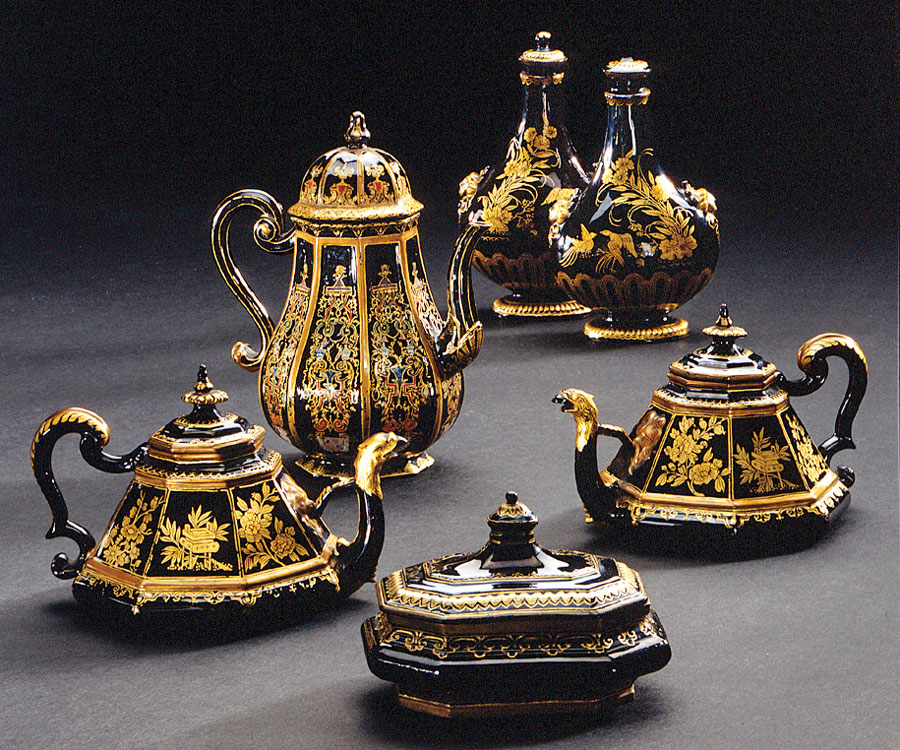
- Fig. 9: Display of “Schwartz Porcelain,” stoneware, associated with Johann Friedrich Böttger (1682–1719), Meissen, ca. 1710–1713. This type of Böttger stoneware, decorated with a black glaze and gold detailing, is referred to as Schwartz Porcelain; the effect is intended to emulate lacquer. Photography by Martine Beck Coppola.
Another purpose of such palaces was to provide an opportunity to showcase collections (Fig. 7). The castle offered Sibylla a sumptuous venue for her expansive holdings of Chinese porcelain (Fig. 8) and Meissen porcelain2 and stoneware, which included the hard-bodied red stoneware referred to as “Schwartz Porcelain” 3 (Fig. 9). Some of the highlights include examples associated with Johann Friedrich Böttger (1682–1719), the Meissen chemist who, in 1709, developed the first “recipe” in Europe for hard-paste porcelain. This breakthrough finally created a product that rivaled porcelain imported from China and Japan. Of the Meissen porcelain in the collection are early 1720s examples with chinoiserie decoration associated with the hand of Johann Gregorius Höroldt (1696–1775) (Figs. 10).
Among ceramics aficionados, the collection is renowned. Malcolm Gutter, a San Francisco-based scholar and owner of one of the world’s foremost collections of early production Meissen,4 remarks, “Within the group that includes Augustus II’s royal collection in Dresden, the collections in the Palace Museum in Arnstadt, and Gotha Castle in Thuringia, Schloss Favorite houses the most important pieces of early Meissen in the world. Of these,” Gutter continues, “Sibylla’s collection may be second only to that of Dresden’s Augustus the Strong, with whom she had a lifelong friendship.” Gutter also cites that among the qualities lending to the importance of the material is that the porcelain was “ordered and delivered when brand new; it can be said these are all documentary pieces.” Specifically, adds Gutter, “The Schloss has many important pieces of Asian porcelain, lacquers, and soapstones—all significant in the history of Meissen because they offered either direct imitation or inspiration (Fig. 11) to the manufactory.”
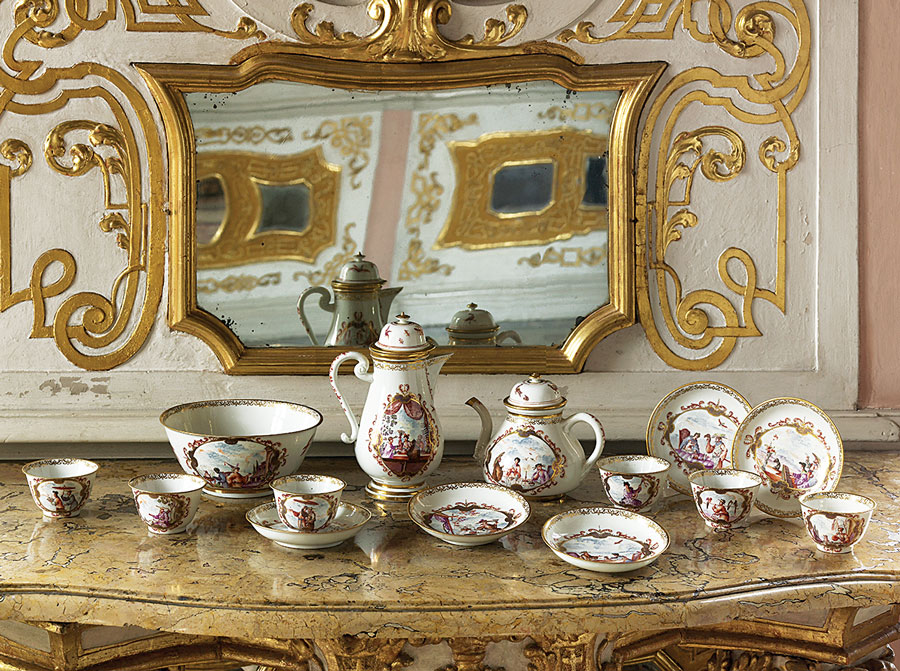
- Fig. 10: Ceremonial porcelain service with teapot, coffee pot, bowl, six cups and five saucers; decorated in polychrome glaze colors. Workshop of Johann Gregorius Höroldt (1696–1775), Meissen, ca. 1721–1723. Marked on the underside of the bowls: “KPM” (Koenigliche Porzellanmanufaktur; Royal Porcelain Factory). This chinoiserie-decorated tea and coffee service is among the outstanding examples dating from the early phase of J. G. Höroldt’s career at Meissen, in which a uniform design unites the different pieces to one service. The service may date to 1721, a year into Höroldt’s fifty-plus year career at Meissen. The service was seen as a prestigious show piece, which Sibylla used for entertaining. Photography by Martine Beck Coppola.
“Sibylla Augusta, together with Duke Frederick III of Saxe-Coburg-Gotha and Augustus the Strong,” notes Gutter, “especially loved the Böttger stoneware and porcelain (Fig. 12). Importantly, they had the monetary resources to acquire it.” Dr. Ulrike Grimm, former head curator of State Palaces and Gardens Baden-Wurttemberg, which oversees Schloss Favorite, reaffirms Gutter’s assessment, stating “In terms of quality and importance, the Favorite collection is comparable only with that of Augustus the Strong. The exchange of connoisseurship and knowledge between Sibylla Augusta and the most important European collectors of her time was the foundation for what Favorite became,” says Dr. Grimm. “Three hundred years later, the care of the castle and its collections is based on a similar exchange between international experts and collectors.”
Included among those is Dr. Käthe Klappenbach, curator at the Prussian Palaces and Gardens Foundation Berlin-Brandenburg. An authority on Bohemian chandeliers, she considers one of the palace’s many pièces de résistance to be a chandelier with red and blue pearls that lights the apartment once inhabited by Sibylla Augusta’s son, Prince Ludwig Georg (Figs. 13, 13a). Dedo von Kerssenbrock-Krosigk, head of the Hentrich Glass Museum in Dusseldorf, is confident that the chandelier was produced for Duke Julius Franz of Saxe-Lauenburg, Sibylla Augusta’s father, who owned a glass factory in Northern Bohemia. It can be dated to somewhere between 1685 and 1689, the year Julius Franz died, making it among the earliest full glass chandeliers to survive. The extravagant pair of chandeliers in the Mirror and Florentine Cabinets (see figure 16) are made of metal decorated with Bohemian glass pieces. Dr. Pechacek believes they appear to be late seventeenth or early eighteenth century, and are from Northern Italy.
|
|
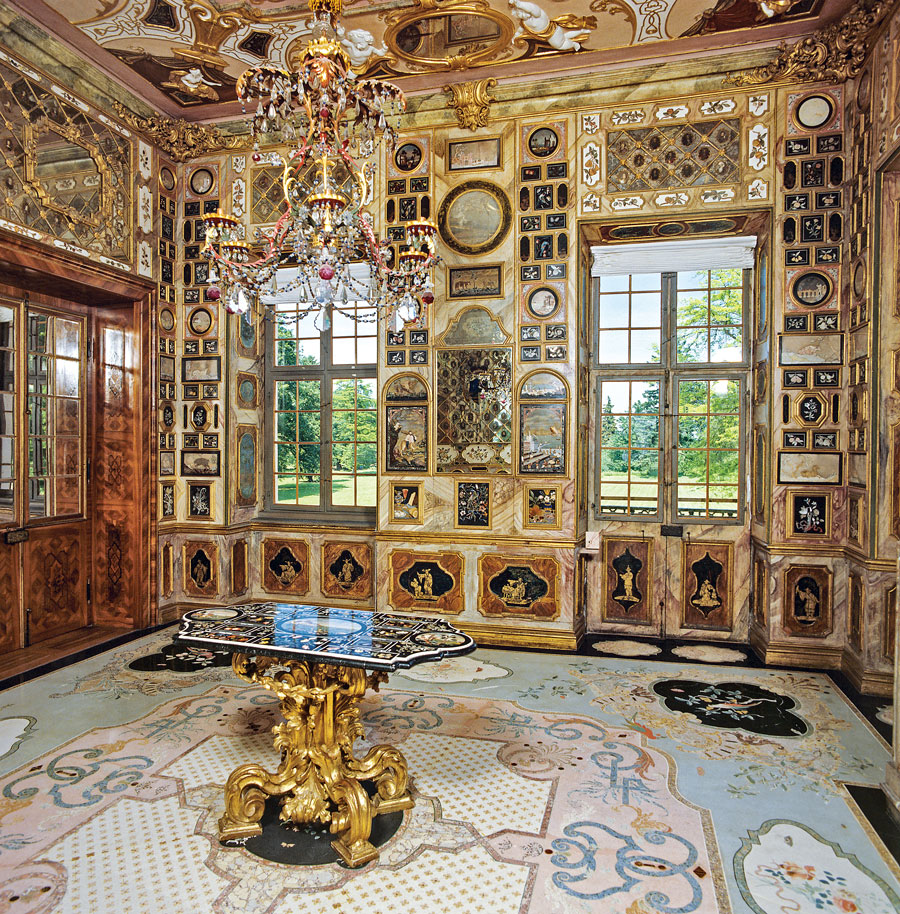
- Fig. 16: Florentine Cabinet in the apartment of the Crown Prince. This breathtaking room is still in its original condition and the only one of its kind in Europe. The 758 Pietra Dura panels were crafted from marble, granite, and semiprecious stones in the Grand Ducal workshops in Florence. They cover the walls in a kaleidoscope of color. Sibylla Augusta was probably able to acquire the panels because of her close kinship with the House of Medici. The splendid chandelier (the counterpart hangs in the Mirror Cabinet opposite), counts as one of the most important Bohemian chandeliers to have survived from the early-eighteenth century. Photography by Landesmedienzentrum Baden-Wuerttemberg.
Even though now shown with minimum porcelain, glass, and furnishings, the interiors are breathtaking. Ornate plasterwork and frescoes adorn ceilings; gilt strapwork on walls harmonize with elaborate furniture, lacquer, ceramics, and tapestries; and floors are of marquetry or of colorful, inlaid Scagliola. Each room has its individualized splendor. Prince Bernhard of Baden, a descendant of Sibylla Augusta, describes Schloss Favorite as “embodying the character, style, and taste” of his famous ancestor. “Every detail of the rich interior has a special nuance and her love for everything Oriental is tastefully integrated. The palace exhibits an elegant rather than the over-exuberant Baroque splendor, which was common at that time.”
Among the opulent rooms is the Mirror Cabinet (Fig. 14), lined with 313 mirrors that reflect the prisms that hang from the glass chandelier (not shown in image), while serving to present porcelain, miniatures, and the fifty-six costume paintings on the walls. The paintings are among the most provocative and personal works of art at Schloss Favorite. Elaborately crafted by a court painter with fabrics, lace, and delicate borders captivating each image, they include portraits of Sibylla Augusta (Fig. 15), Ludwig Wilhelm, and the two young princes, Ludwig Georg and August Georg, in masquerade for parties at the Schloss. The paintings were displayed throughout the room, just as they are now, and sent a message to guests of the scale of amusing festivities that took place at Schloss Favorite.
The Florentine Cabinet is especially remarkable for its 750 picture panels executed in commesso, a technique that uses cut stones, not unlike mosaic, to create a style of marquetry (Fig. 16). These were produced in Florence following Sibylla Augusta’s trip to Italy in 1719. The Florentine Cabinet is flawlessly intact and has the status of being the only room of its kind in Europe. The Floral room (Fig. 17) is embellished with papier-mâché wall columns into which silk floral sprays have been worked. Paintings create the illusion that porcelain and stoneware adorn the mantelpieces and a fresco depicts cherubs throwing Asian porcelain.
Notes Heike Kronenwett, director of Baden-Baden’s history museum and archives, “The Margravine was confident. Her manner allowed her to manage the porcelain collections and create Schloss Favorite, while taking care of all her duties.” This assessment of a self-assured and powerful woman is conveyed in a portrait of Sibylla Augusta, which hangs in the director’s office. Bedecked in voluptuous attire and adorned in a wig of silver wires, she was evidently proud of her status and of her accomplishments. Sibylla Augusta was an extraordinary woman who created an extraordinary porcelain palace.
The Porcelain Palace (Rastatt Favorite Palace) in Rastatt-Förch, Germany, is open seasonally from March through mid-November. Guided tours are in German with translated text. For information visit www.schloss-favorite-rastatt.de or call +49(0)72 22. 4 12 07.
The author thanks Dr. Petra Pechacek, curator, State Palaces and Gardens Baden-Wuerttemberg, Dr. Ulrike Grimm, and Jody Wilkie, Christie’s International Specialist Head, European ceramics and glass.
This article was originally published in the 16th Anniversary (Spring 2015) issue of Antiques & Fine Art magazine, a digitized version of which is available on afamag.com. Antiques & Fine Art and AFAmag are affiliated with InCollect.com.
Nancy Frick Battaglia writes about architecture, design and the decorative arts. She is based in New York City.
All photographs are courtesy of Staatliche Schloesser & Gaerten Baden-Wuerttemberg.
This article was originally published in the Anniversary/Spring 2016 issue (January-April) of Antiques & Fine Art magazine, which is affiliated with InCollect.com. The fully digitized issue is available on www.afamag.com.
2. Meissen, located near Dresden Germany, was established in 1710 by Augustus II, “The Strong,” elector of Saxony and king of Poland. The royal Saxon porcelain manufactory at Meissen was the first to produce hard-paste porcelain in imitation of the porcelains of China and Japan.
3. Schwarz Porcelain is decorated with a black glaze and painted imagery to imitate lacquer.
4. 100 examples from Gutter’s collection are in the exhibition “A Princely Pursuit: The Malcolm D. Gutter Collection of Early Meissen Porcelain,” on view through March 2016 at the Legion of Honor in San Francisco. Visit https://legionofhonor.famsf.org/exhibitions/princely-pursuit-malcolm-d-gutter-collection-early-meissen-porcelain.















